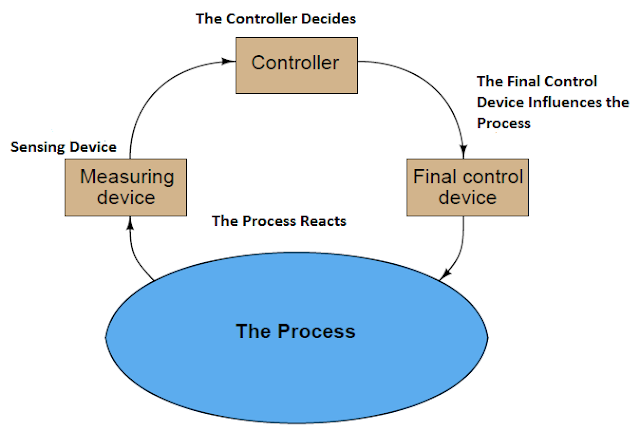Instrumentation is a science that deals with
measurements and control of processes. Instrumentation is applied in almost any
field from Medical, Manufacturing of pharmaceutical drugs, to simple processes
like temperature control in homes using Thermostats. Note that if we can’t
measure it then we have no need of controlling it.
You can also read: Basics of a Control Loop
Measurements can be in form of Fluid pressure, Fluid
volume, Fluid Flow rate, Temperature, Electrical voltage or current, Chemical
concentration etc. Once we have the quantity of the measured value, we
then transmit a signal representing this quantity to an indicating or
computing device where either human or automated action then takes place. If
the controlling action is automated, the computer sends a signal to a final
controlling device which then influences the quantity being measured. The final
control device can be in the form of:
- Electric motor
- Control valve-for throttling the flow rate of a fluid
- Electric heater
The measurement device and the final control device
connect to some physical system called the process.
 |
| Block Diagram of a Process Control System |
- The measuring device senses
- The Controller decides
- The final control device influences the process
- The process reacts to the influence of the final control
You can also read: Basics of a Control Loop
So in a nutshell this is what we call a Process
control system.
Don't miss out on key updates, join our newsletter list here.
No comments:
Post a Comment